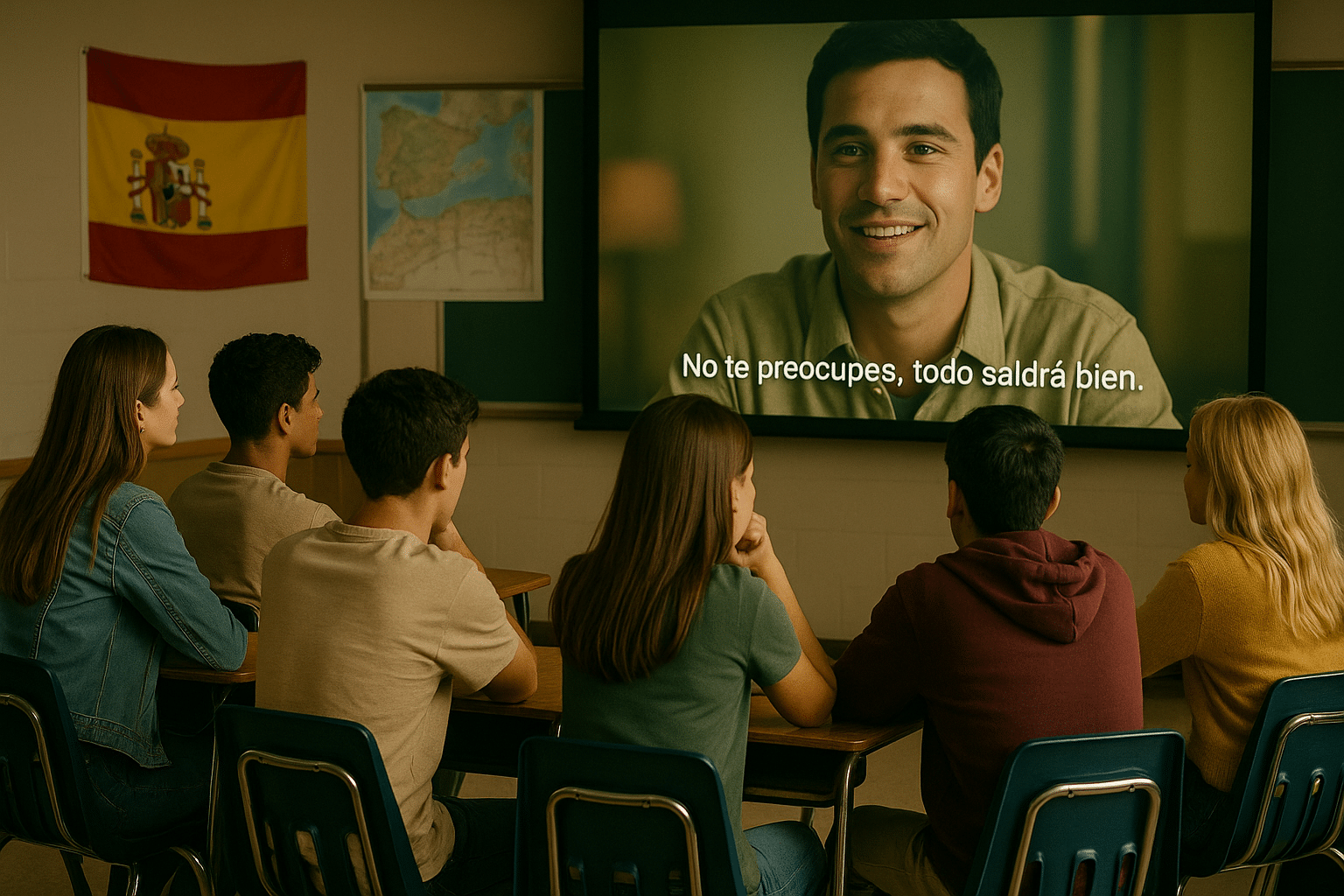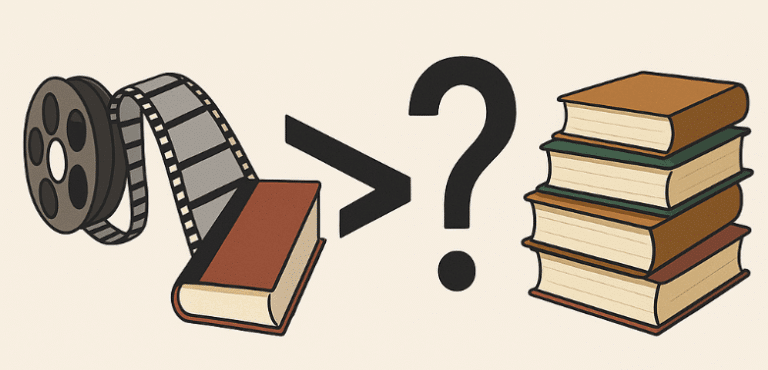Una clase de lengua mundial que cobra vida a través del cine

If your school leadership has ever balked at giving you 45 minutes for a “movie,” you’re not alone.
The idea that films are entertainment, not instruction runs deep — but it’s based on a misunderstanding.
Film is not filler. Film is a methodology.
When used with intention, movies can transform how students think, feel, and remember a language.
🎓 Why This Myth Exists
Let’s be honest: not every classroom “movie day” has been instructional.
Administrators worry that films are passive, that they don’t align with standards, or that they steal precious instructional minutes.
Those concerns are valid — but they’re also easily overcome.
Because the truth is, film can be one of the most powerful teaching tools we have.
🎓 Movies and Memory: What Science Says
Think about the last time you heard a song from decades ago — and suddenly remembered every lyric.
That’s how long-term memory works.
Music and movies create multi-sensory, emotionally charged experiences that get stored differently than rote information.
Here’s what research tells us:
- 🎞 A study published by the National Library of Medicine found that people retained narrative details from a 27-minute movie for weeks — even without being told to remember them (source).
- In Psychological Science, researchers found that film viewers remembered new words and plot events better than those who read text alone — because visual and emotional cues strengthen neural connections (source).
- 🌍 A SpringerOpen review on language learning through film concluded that movies boost retention, motivation, and authentic speech acquisition more effectively than isolated drills (source).
- 💬 In an ERIC study on movie-based instruction, students said that vocabulary in films “sticks” because it’s tied to emotion, repetition, and meaningful context (source).
Our brains crave connection — and film gives language context, rhythm, and emotion, the very elements that turn short-term input into long-term memory.
🎥 Movies as a Methodology
Film-based instruction isn’t about pressing play — it’s about how we guide students through the experience.
Here’s the difference between a movie day and a methodology:
| Movie Day | Film Methodology |
| Passive viewing | Guided interaction before, during, and after |
| “Fun reward” | Purposeful alignment with curriculum standards |
| No follow-up | Scaffolding, repetition, and production tasks |
| Focus on plot | Focus on language, emotion, and meaning |
When films are integrated thoughtfully, they become active, multimodal lessons that reinforce listening, speaking, reading, and cultural literacy — all at once.
💡 Practical Structure for Film-Based Lessons
A strong film-based routine might include:
- Preview (2–3 min) — Introduce key phrases, context, and questions.
- Clip Viewing (3–5 min) — Watch a short segment tied to your lesson.
- Interactive Pause (2 min) — Ask students to predict, repeat, or identify key expressions.
- Post-Viewing Task (5–7 min) — Retell, act out, or discuss in pairs.
- Revisit Later — Spiral back to the same phrases in new clips for lasting recall.
These short, focused interactions create a rhythm that mirrors natural language acquisition — much like the way we pick up vocabulary through daily life.
Answering the Common Objections
| Objection | Reality |
| “Movies waste time.” | Films can replace less effective drills, not add to them. Clips can be used in 10-minute segments tied directly to standards. |
| “They don’t align with curriculum.” | Choose films by AP or state theme: family, identity, global challenges, community. Every scene can anchor a performance task. |
| “Students just zone out.” | Active pausing, subtitles, and comprehension checks keep engagement high. The right prep turns viewers into participants. |
| “It’s not rigorous.” | Film tasks can assess listening, inferencing, cultural interpretation, and interpersonal speaking — all core proficiencies. |
❤A Case for Re-Defining Rigor
Rigor doesn’t mean more worksheets — it means deeper connection.
Film immerses students in real voices, accents, and cultural nuance.
It’s where vocabulary stops being a list and becomes an experience.
If rigor is about creating lasting learning, film isn’t a distraction from instruction — it is instruction.
🎬 Final Thoughts
The next time someone asks, “Why show a movie in class?”
you can answer:
“Because I’m not showing a movie — I’m teaching through one.”
Films engage memory, emotion, and culture in ways that traditional instruction can’t.
They make language personal. They make it stick.
Explore my ever-growing library of film-based Spanish guides and activities at
🛍 Teachers Pay Teachers | Palabras y Películas
Let’s turn screen time into speak time. 🎞



